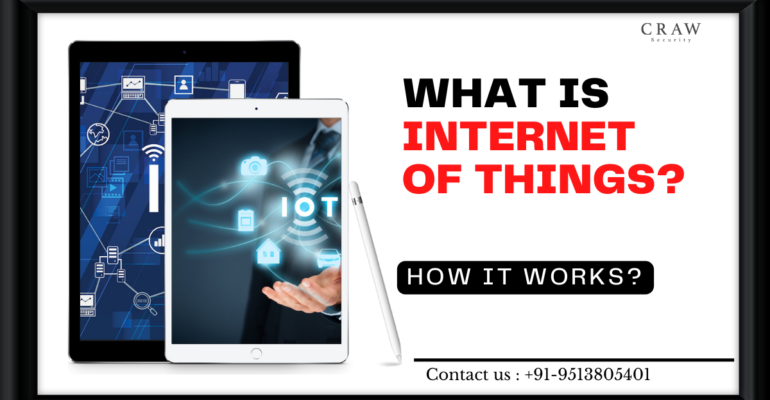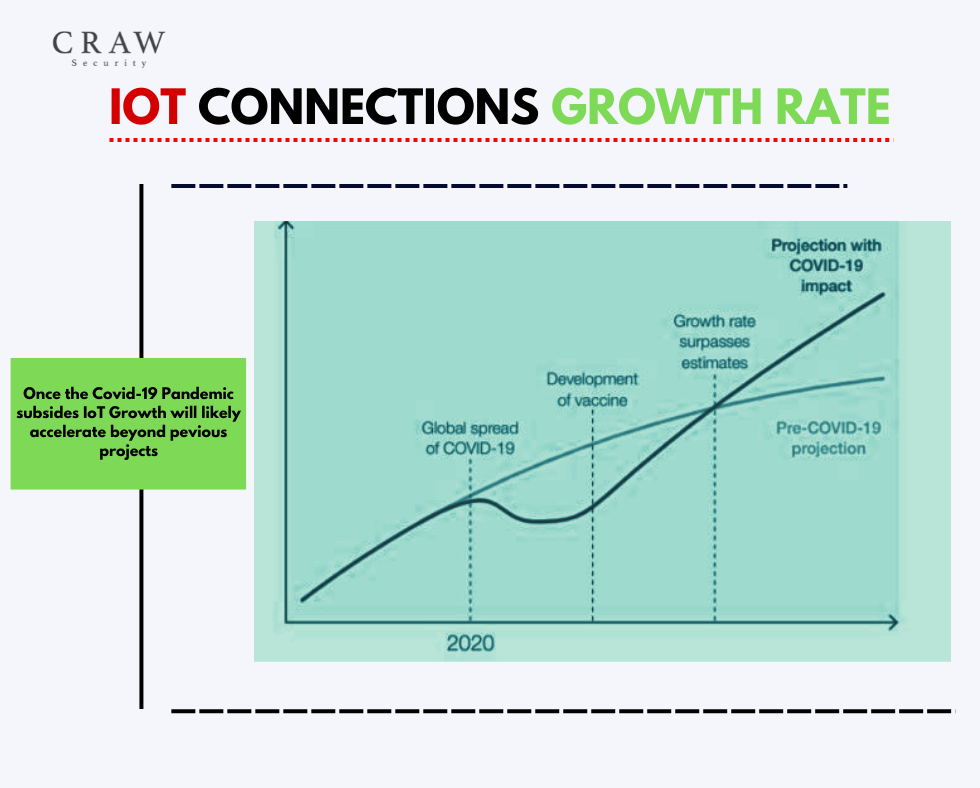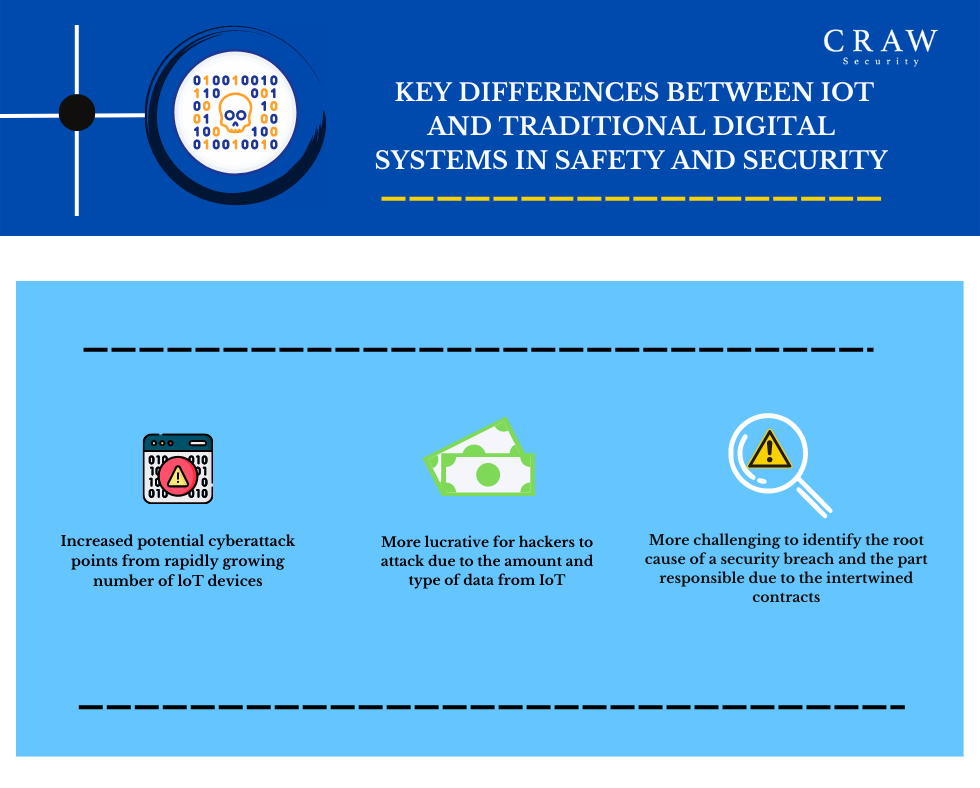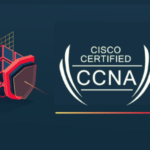What is Internet of Things? | How IoT Works

What is Internet of Things? | How IoT Works
What is Internet of Things?
Whenever you think about what is Internet of Things, the one thing that always crossed your mind would be the internet or the equipment that is fully channeled through an active source of the internet. Further, we may explain the terminology of the Internet of Things as the unified source of information channeling consisting of numerous internet-enabled smart devices interconnected with one another to work as one.

Right from the technology of soil moisture sensors utilization to enhance peasant yields, to bimetallic strips and thermometers, the Internet of Things (IoT Technologies) is recasting the pathway we live and operate in our day-to-day official as well as personal chores.
Crores of networked ‘smart’ physical gadgets as well as AI-enabled projections all over the planet, right from the corners of your city lanes, in homes, recreational parks, hospitals, restaurants, etc. are continuously gathering and transmitting datasets across the internet, delivering them a status of digital intelligence and liberation. According to McKinsey, roughly one-fourth of enterprises were operating IoT technologies in 2019 which rose up from 13% in 2014.
This so-called digital changeover is coming into action due to the arising technologies, comprising robotics, the Internet of Things, and artificial intelligence, which is termed the 4th Industrial Revolution – and the ongoing novel Coronavirus pandemic has given rise to the usage of these esteemed technologies.
Moreover, we will study the different types of Internet of Things, the History of IoT devices, How IoT works, and many more to add information to your knowledge panel by every possible means.
Getting Started with the History of IoT
In the initial stages, the whole new concept of attaching some remote sensors and human intelligence to physical devices was first introduced in the decade of 1980s when some university-going folks determined to alter a Coca-Cola vending machine to self-judge its contents distantly. However, the technology was hefty and the progress related to it was highly finite.
It was the year 1999 when the acronym ‘Internet of Things’ first came into existence by Kevin Ashton, a notified computer scientist. In addition to his research while working with the famous organization – P&G (Procter & Gamble), Ashon presented positioning RFID (Radio-Frequency Identification) chips on products to identify them via a proper supply chain.
Moreover, Ashton reportedly operated the then catchword ‘internet’ into his submission to get the attention of almost every executive, and the phrase is still stuck from that time’s buzzword. Over a period of time in a decade, the public started showing their premium interest in the IoT technology and the terminology ‘Internet of Things’ took off massively as more IoT-based devices began showing into the market.
Now the time has come the year 2000, and the famous electronics appliance LG introduced its first smart refrigerator, whereas, in 2007, the first iPhone came to light followed the number of IoT devices increased with a massive stroke along with the number of users exceeded on earth in the year 2008.
Furthermore, Google initiated testing for chauffeurless cars in 2009 and it also introduced the Nest smart thermostat in the year 2011 that permitted remote access to central heating parameters.
Types of Internet of Things
There are many types of Internet of Things Wireless Tech that are easing the life of humankind by giving their prominent services for making our day-to-day life easier than before. Six Types of Internet of Things Wireless Tech are mentioned below:
- Low Power Wide Area Networks (LPWANs)
- Cellular (3G/4G/5G)
- Zigbee and Other Mesh Protocols
- Bluetooth and BLE
- Wi-Fi
- RFID (Radio Frequency Identification)
Application of IoT
As with the change in time, the technology is boosting at its best version and we can now feel free to do our multitasking functionalities, moreover, the connected Internet of Things devices can be categorized into further mentioned three major domains:
- Consumer IoT, such as wearables (smartwatches, smartphones, etc.),
- Enterprise IoT, which includes smart factories and precision agriculture, and
- Public spaces IoT, such as waste management.
How IoT works?
You can generally understand the primetime mechanism of an IoT ecosystem that comprises web-enabled smart devices that utilize implanted systems like processors, sensors, and communication hardware in order to gather, share and functionalize on datasets they obtain from their surroundings. Moreover, the Internet of Things devices transmits a piece of sensor information they obtain by linking to an IoT gateway or any other edge gadget where info is either sent to the cloud for checking or examined locally.
Every so often, these so-called Internet of Things devices intercommunicate with further connected devices and act on the datasets they acquire from one another. Moreover, the Internet of Things devices does most functions with human interference, though people can communicate with these devices at their own will – for example, for setting up them nicely, giving them the right guidelines, or accessing the datasets.
Subsequently, the connectivity, networking, and communication formalities utilized with these web-based Internet of Things devices majorly depend on the specified Internet of Things applications deployed. However, you should keep in mind that the Internet of Things can also establish a good source of information inside their memory panel by making use of artificial intelligence (AI) and machine learning (ML) to help in constructing the data gathering methodologies pretty easily and more dynamic.
By knowing these above-mentioned facts about Internet of Things, if you have developed a keen interest in understanding about this high-end technology, you can opt for the highly valued IoT Pentesting Course either online or offline modes by Craw Cyber Security Institute under the observation of highly trained and certified training partner in New Delhi.
Advantages of IoT (Internet of Things)
Now it’s high time to grab all the required Advantages of IoT (Internet of Things) and how it gives us life-changing and time-saving benefits that can be very crucial for ourselves. In addition, these advantages of IoT sometimes give us numerous prominent benefits worth a million to us as they give us comforts and ease of doing much pity and major things that save our time which ultimately saves our money and fortune.
Furthermore, the sincere idea of IoT is illustrated by two explanatory elements:
- Automation: The basic concept of the Internet of Things devices comprises straight interaction between individual devices, appliances, and other separate hardware without human interference.
- Connectivity: Improved ties within a preferred network on a global parameter supply effortless entry to diverse facts.
In short, we can nicely say that these Advantages of IoT are preferably be chosen by distinguished niches or organizations to give their daily work methodologies a genuine touch of IoT devices such as the following:
- Enhanced productivity of staff and lessen man labor.
- Effective operation management.
- More suitable utilization of resources and assets.
- Cost-effective operation.
- Enhanced work security.
- Detailed marketing and business development.
- Enhanced customer service and retention.
- Better trade chances.
- More trustworthy image of the company.
The Future of IoT
The Future of IoT is premium bright and shining as more organizations are drawing their sincere concentration towards developing more IoT devices that can somehow save some time or give an additional benefit to mankind in its day-to-day life routine. Moreover, a wide spectrum of potential IoT apps are strictly “limited to human imagination”, i.e. we cannot develop the things that we even cannot imagine. In addition to these IoT applications, they can literally benefit the people of the earth.

According to 2018 research on 640+ Internet of Things deployments conducted by the World Economic Forum in cooperation with research firm IoT Analytics, revealed that around 84% of current IoT dispositions address, or have the potential to upgrade, the UN’s Sustainable Development Goals.
These comprise encouraging additional effective usage of the natural resources, establishing better, sincere “smart cities”, and developing cleaner, and reasonable energy alternatives.
Moreover, the gaming industry, real-time crime mapping, medical industry, etc. can also be enhanced using the varied IoT ‘smart gadgets that can be very helpful for the creation of vast and encouraging world full of Internet of Things connected devices.
Frequently Asked Questions
About Internet of Things Promising Features
1: What is internet of things in simple words?
Internet of Things can be defined as the interconnection of various internet-based devices that can be utilized as one single piece of equipment. If you wish to learn more about the Internet of Things, join a dedicated IoT Pentesting Course at Craw Cyber Security Institute at Saket and Laxmi Nagar locations in New Delhi.
2: What is internet of things with example?
Any internet-enabled device loop that is working through a single or unified source is widely termed as the Internet of Things such as smart home security systems, Autonomous farming equipment, etc.
If you are keen to know more about the Internet of Things, then you may certainly join IoT Pentesting Course by Craw Security’s main educational branches at Saket and Laxmi Nagar locations in New Delhi.
3: Why is it called internet of things?
Since many internet-based gadgets or equipment are connected to one another and operate as a single source, it is highly called as Internet of Things.
4: What is IoT and why is it important?
IoT can be defined as the Internet of Things which is a source of interconnected internet-based devices which work as a single machine to deliver many end results.
IoT devices are highly important from the point of view of ease of various human activities which we need on numerous occasions or even on our day-to-day basis.
5: What is IoT and how it works?
IoT is a complex situation where numerous interconnected internet-based devices give prompt access to one another and share crucial pieces of information that are duly required to accomplish a task.
If you are keen to know the mechanism of how IoT works, you may join a dedicated IoT Pentesting Course through a very genuine Craw Cyber Security Institute at Saket and Laxmi Nagar.
Conclusion
In the bottom line, we just tried to give you a basic understanding of how the Internet of Things works as a professional. Moreover, if you wish to know more about IoT devices, you may join our exclusive IoT Pentesting Course by Craw Cyber Security Institution at Saket and Laxmi Nagar branches in New Delhi under the guidance of prominent trainers and mentors having at least 7+ years of quality industry experience.
















